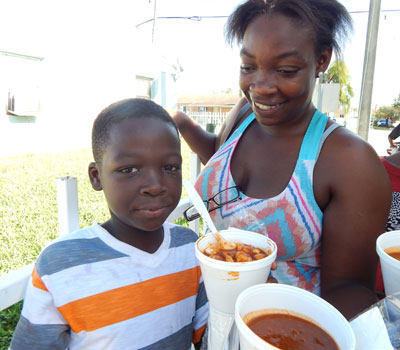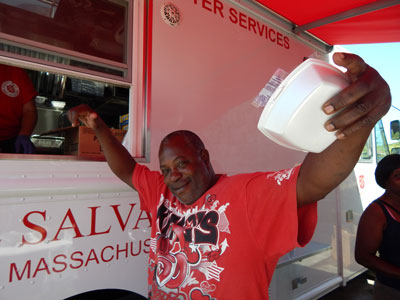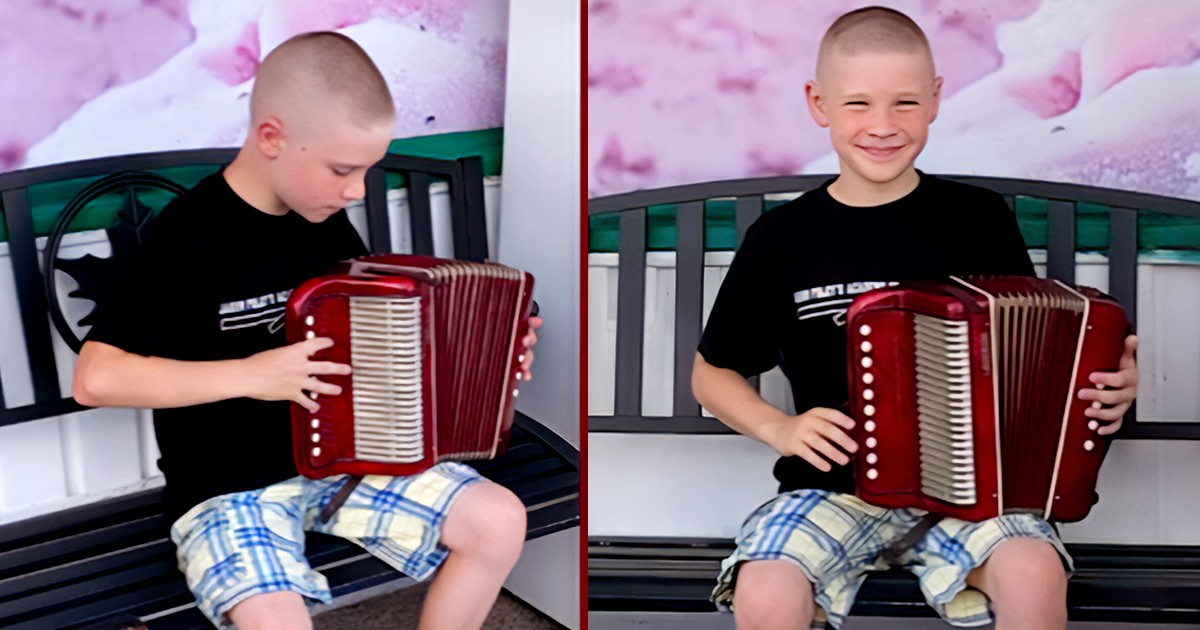Four days later, at the request of The Salvation Army in the United States, the Canada and Bermuda Territory deployed 10 members of its emergency disaster services personnel to lead an incident command team in Miami. Our role was to provide assistance with food and hydration services, emotional and spiritual care, and crisis intervention.
When the team arrived in Miami, the effects of the storm were apparent. Irma’s wind gusts of up to 160 kilometres per hour had uprooted mature trees, slammed palm trees into rooftops and toppled hotel signs. Branches and piles of debris covered yards and streets. But the biggest issue was power. Strong winds and falling trees had knocked out overhead power lines, and 90 percent of homes in Miami-Dade County were without electricity. For many people, it was several days before it was restored.
 Many homes in the Miami area were damaged by falling trees
Many homes in the Miami area were damaged by falling trees
Every day, the need for food and hydration increased. The combination of no power and extreme tropical heat took its toll on vulnerable populations. Canteen volunteers from the Massachusetts and Pennsylvania divisions served up to 1,000 meals per day to people who included seniors with mobility issues who were stranded in their apartments, low-income communities who were running out of food, and people with developmental delays who had particular dietary needs.
Over nine days, and until electricity had been restored in 99.9 percent of Miami-Dade County, The Salvation Army provided thousands of people with hope during an extremely difficult time. Ten canteens served 14,400 meals, 12,388 snacks and 14,700 bottles of hydration, and more than 500 people received emotional and spiritual care.
Powerless
In Liberty City, a Miami neighbourhood where half of the residents live below the poverty line, escaping Irma’s wrath was almost impossible. Generators, storm windows and plywood weren’t an option for residents who could barely afford to put food on the table. When Diamond came to The Salvation Army’s canteen, she was hungry, anxious and restless.
“We need power,” Diamond said. “It’s 92 degrees [33 C], the sun is out and it’s hot. Food bought before the storm is rotten. Canned food and essentials are running low.”
 Diamond and her son are grateful for a bowl of chili from a Salvation Army canteen
Diamond and her son are grateful for a bowl of chili from a Salvation Army canteen
“Sparks bounced off our window,” she shared. “The howling and forceful winds rocked the car. It was scary.”
At sunrise, Diamond took her children to family who lived close by. “There were 20 people in the house,” she said. “It was chaos. We couldn’t feed everybody. I haven’t eaten a good meal in six days.”
Taking a bowl of food from the Army’s canteen, she smiled. “I am so ready to eat this chili.”
After the meal, Diamond invited some of our team to see her home. Debris and downed trees covered her yard, while her roof took the brunt of the hurricane.
When she looked in her back door and saw light, it was a welcome surprise. “I’ve got power!” she shouted.
“I Have No Light, Nothing”
In Homestead, a largely Haitian community, hungry children, youth, adults and seniors swarmed the Army’s canteen. Within 20 minutes of our arrival, 275 hot meals were distributed.
Power had been out for a week. The extent of the outage meant many of the neighbourhood stores were closed. Canned food supplies and bottled water set aside for the aftermath were dwindling. People were hot, frustrated and running out of patience.
 “When I saw The Salvation Army’s truck, I thought, This is good,” says Lustin, who received a hamburger from the canteen
“When I saw The Salvation Army’s truck, I thought, This is good,” says Lustin, who received a hamburger from the canteen
Forced out of his home in Key West 10 days earlier, Lustin couch surfed and stayed in motels. “I left everything behind—my computers, my clothes, my car,” he said. “I need to see if I lost my stuff. If I did, I don’t know what I’m going to do.”
News reports estimated that 25 percent of the homes in the Keys were destroyed and 65 percent sustained major damage. Living from paycheque to paycheque, Lustin was guaranteed to face further hardship as cleanup began.
“When I saw The Salvation Army’s truck, I thought, This is good,” Lustin said. “I feel OK right now, but I’m not even sure if I’ll have a job to go back to.”
Homeward Bound
Seven days after the team arrived, The Salvation Army’s canteen operations wound down.
In the days following the storm, families were hungry, seniors suffered from the heat and thousands were unable to get to work. Yet, in the midst of the devastation and destruction, people couldn’t say “thank you” enough. They were happy to see us.
The Salvation Army has the ability to provide both immediate emergency assistance and long-term recovery help. In Miami, our services shifted from emergency response to post-disaster care with restocking of groceries and an assessment of the ongoing physical, emotional and spiritual needs of disaster survivors and responders.
“It’s a struggle now,” one young father said. “But thanks to The Salvation Army, we are going to make it.”










Leave a Comment